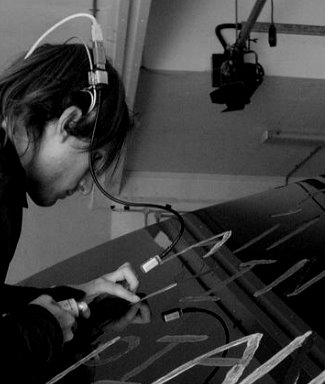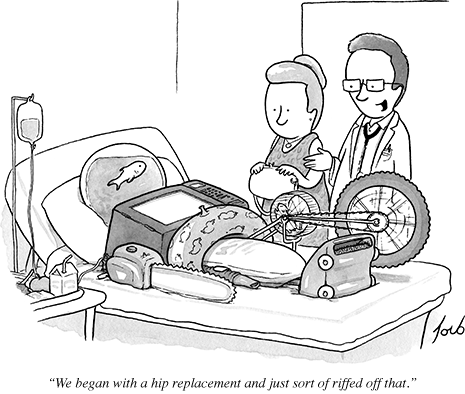Remember you can vote once per day for the About.com Atheism Awards. I’m one of five nominees for Best Atheist Blog. More details here.
Before a very delicate operation on his arm, the patient says to his surgeon, “Doc, Doc, I gotta know, you can give it to me straight. After the operation, will I be able to play piano?”
The doctor answers in the affirmative and the patient sighs, “Gee, Doc, that’s swell! I could never do it before.”
Medicine is usually focused on restoring a broken or damaged body to default settings. We’re trying to return to normal, not improve beyond the standard expectations of human bodies. That’s why I’m really interested in the bodyhacking that Neil Harbisson is trying.
Harbisson is a color-blind artist, and he’s rigged up a way to ‘hear’ color. With the help of Adam Montandon, Harbisson has set up a webcam that sees what he’s looking at and converts colors into sounds. He’s trained himself to recognise different notes as different colors, so he can identify colored objects as anyone else would, but the aesthetic way he appreciates them and their contrasts may not map at all onto the standard views.
“I don’t see it as a device anymore, I see it as part of my body,” said Harbisson. “I started feeling this the same year I started using it, in 2004. I started to feel that the software and my brain were creating a new sense, and there was a point in which I couldn’t differentiate between what was given by the software and what came from my brain. I decided not to take it off anymore, and it’s been a part of my body since then.”
Now that Harbisson has taken ownership of his augmentation, he’s not limiting himself to imitating the sense-perception of everyone else. The next software update will give him the capacity to see/hear ultraviolet light and other non-visible parts of the electromagnetic spectrum. I admire that Harbisson is remaking himself, not treating the default human body as the ideal to restore.

Trying to replicate human bodily function instead of trying to just solve the problem by any method available can be a big problem in medicine. PopSci has a great article on the development on the artificial heart, and it’s clear that a major obstacle doctors’ conviction that they had to build a pump just like a flesh-heart.
Building a heart that mimics nature’s lub-dub may be as comically shortsighted as Leonardo da Vinci designing a flying machine with flapping wings. Nature is not always the best designer, at least when it comes to things that humans must build and maintain. So the newest artificial heart doesn’t imitate the cardiac muscle at all. Instead, it whirs like a little propeller, pushing blood through the body at a steady rate. After 500 million years of evolution accustoming the human body to blood moving through us in spurts, a pulse may not be necessary. That, in any case, is the point of view of the 50-odd calves, and no fewer than three human beings, who have gotten along just fine with their blood coursing through them as evenly as Freon through an air conditioner.
Remembering that the human model is not necessarily optimal made a big difference for medical interventions. Now, we need to hold on to that perspective and not view mere health or stability as the only possible goal of bioengineering.
















